Advertisement
This Artist Put A Mock-Up Of A Triple-Decker In The Seaport To Make Us Think About The Housing Crisis
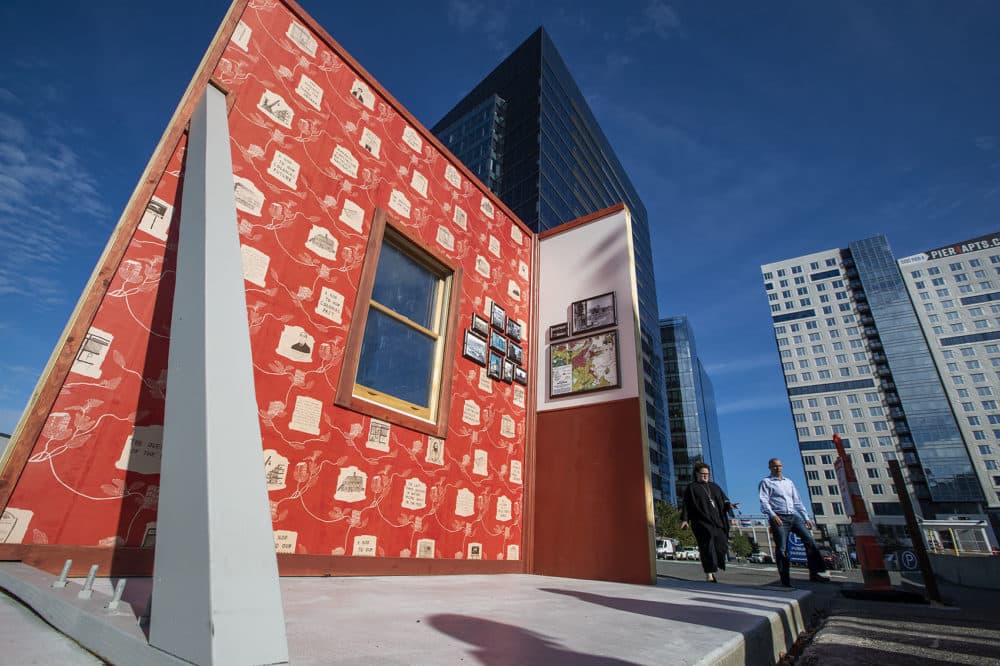
Walking along Northern Avenue in the Seaport, you'll come across two adjacent walls that sort of look like half a house. Shutters frame a window. There's vinyl siding and a gutter runs along the edge of one wall.
The sight of construction in progress is pretty common in the neighborhood as it rapidly developed over the past decade. What's not common is the style of this full-scale mock-up: a classic New England triple-decker.
Pat Falco's latest public art installation, titled "MOCK," uses this contrast to interrogate Boston's history of housing, development and displacement. The 32-year-old MassArt graduate has become known around the city for his satirical critiques of contemporary issues — particularly the housing crisis. An installation he created two years ago called "Luxury Waters" took note of the language we use to sell new development. In it, triple-deckers stacked up to a 62-floor high rise that was situated in the middle of Fort Point Channel. Falco has spent a lot of time researching the city's housing crisis and became particularly fascinated with how synonymous the triple-decker is with Boston.
The style of housing became popular in the late 1800s in New England's industrial cities, particularly Boston, to house an emerging working class. They were constructed on the outskirts of the city, often transforming farmland into neighborhoods. For working class people, these three-floor houses were seen as a way to begin creating generational wealth. You could live on one floor with your family while renting out the other two floors.
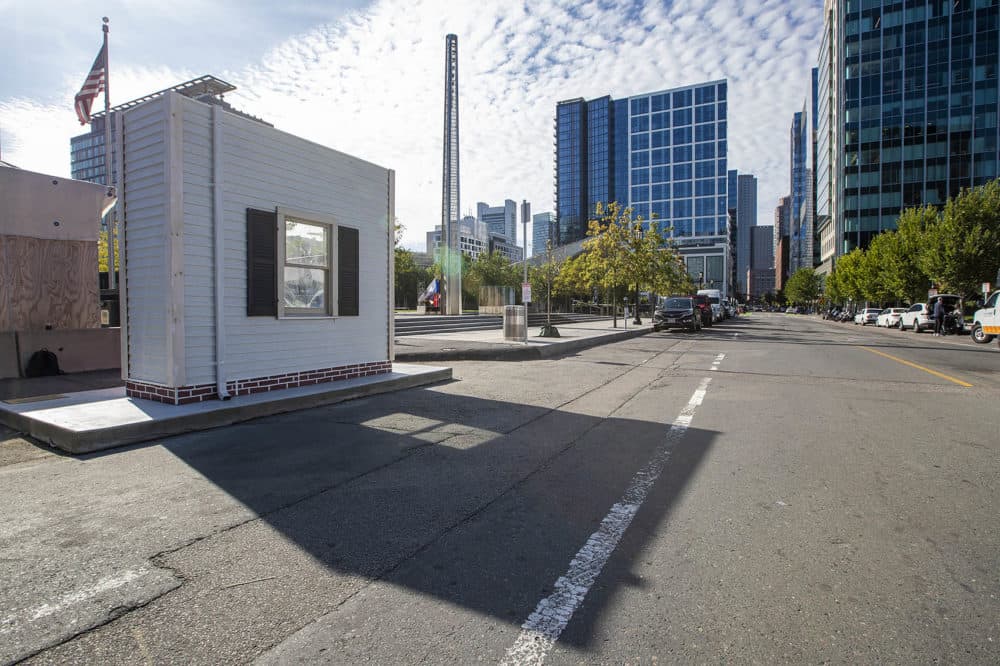
"It's like the exact opposite of a lot of the development happening now," Falco says. "Instead of building housing for the working class and then letting it elevate them, I feel like the approach now is to build housing for the upper class and let it kind of trickle down to the working class."
Inside the mock-up, there's a collection of artifacts that Falco collected while researching this history — things like a map and some black and white photographs. On the wallpaper, which Falco describes as "eviction red," the artist sketched outlines of different housing styles in Boston. There are phrases like "The Question Of The Poor" and "A Nod To Our Colonial Past" (not to forget "A Nod To Our Colonial Future"). There's also a quote from lawyer and author Prescott Hall's essay from the early 1900s titled "The Menace of the Triple Decker": "Of course there are many desirable people who live in cheap buildings, but taking it in a large way unless we take some action we shall deteriorate our land values and buildings, and to some extent deteriorate the population."
Advertisement
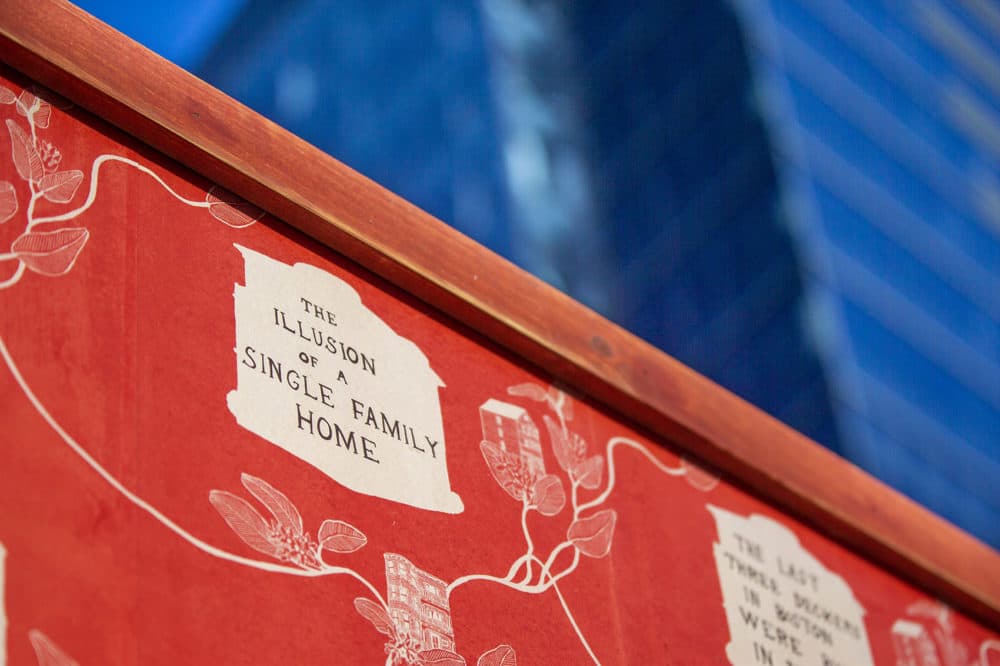
A series of new zoning laws prevented the construction of triple-deckers in the early 1900s. Starting in 1912, Massachusetts allowed any municipality to ban any "wooden tenement" in which "cooking shall be done above the second floor." Falco says wealthy housing reformers rallied against the triple-decker in an anti-immigrant and anti-poor backlash as a way to intentionally prevent economic mobility.
In Boston, many triple-deckers still stand in the city's residential neighborhoods — in Southie, Dorchester, Brighton, Jamaica Plain. The artist, who has lived in the Boston area his whole life, has lived in his fair share of triple-deckers. He wanted to draw attention to this history and highlight the way housing policies impact our lives today.
Falco was selected to be part of Now + There's public art accelerator program this year. The program, according to the public art organization's assistant curator Leah Triplett Harrington, acts as a sort of emotional and financial support for early to mid-career Boston artists. The piece was awarded $25,000 to complete.
"It's a real literal reminder of where we've come in our housing history," she says.
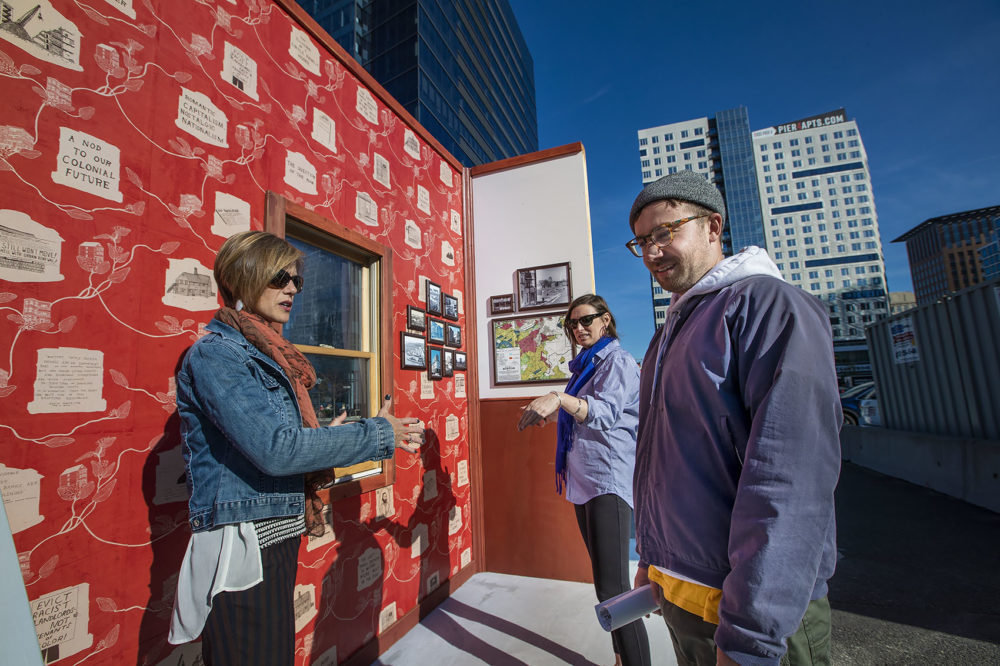
It’s easy to think of this installation as a takedown of gentrification and call it a day. But the Seaport, now full of luxury condos, doesn't have the same narrative of displacement as Boston's other neighborhoods. About a decade ago, the neighborhood was a blank slate.
"There's also a lot of eyes on this neighborhood and thinking about what's going to happen here in the long term," Harrington says. "So placing something that's so kind of historically focused in this neighborhood is also a really exciting way to kind of capitalize on that debate."
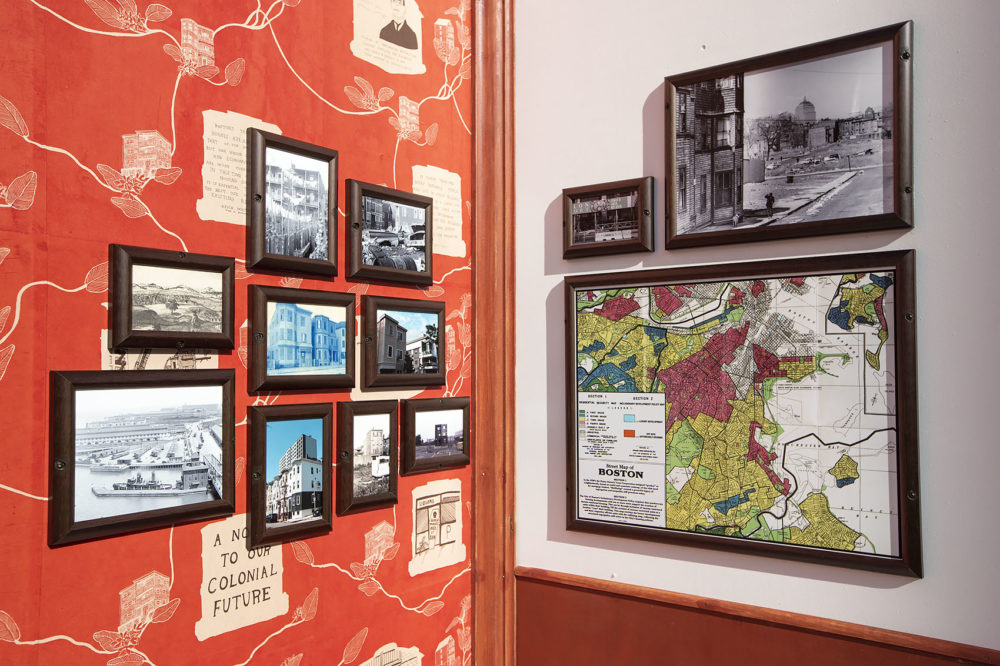
Falco's installation gives us the opportunity to consider how the Seaport could have developed differently.
“I just think a lot of that history should be considered when making current decisions," says Falco. "We want to avoid in 50 years to look back to today and be like, 'Wow, they really made it worse.' Or did we actually kind of start moving in the right direction.”
"MOCK" will be up in the Seaport around the area of 109 Northern Ave. through the end of November. A reception with the artist will be held there on Thursday, Oct. 3 from 5 to 7 p.m.
This segment aired on October 3, 2019.
